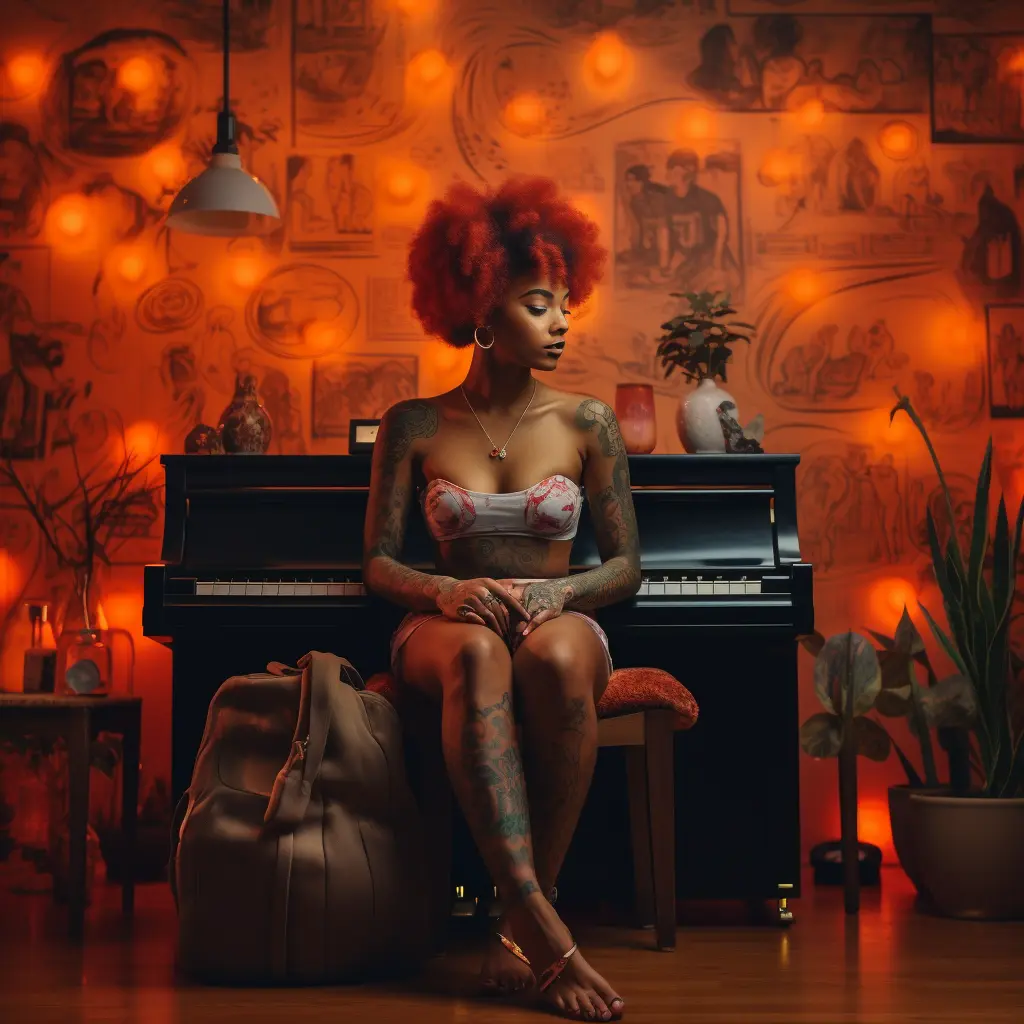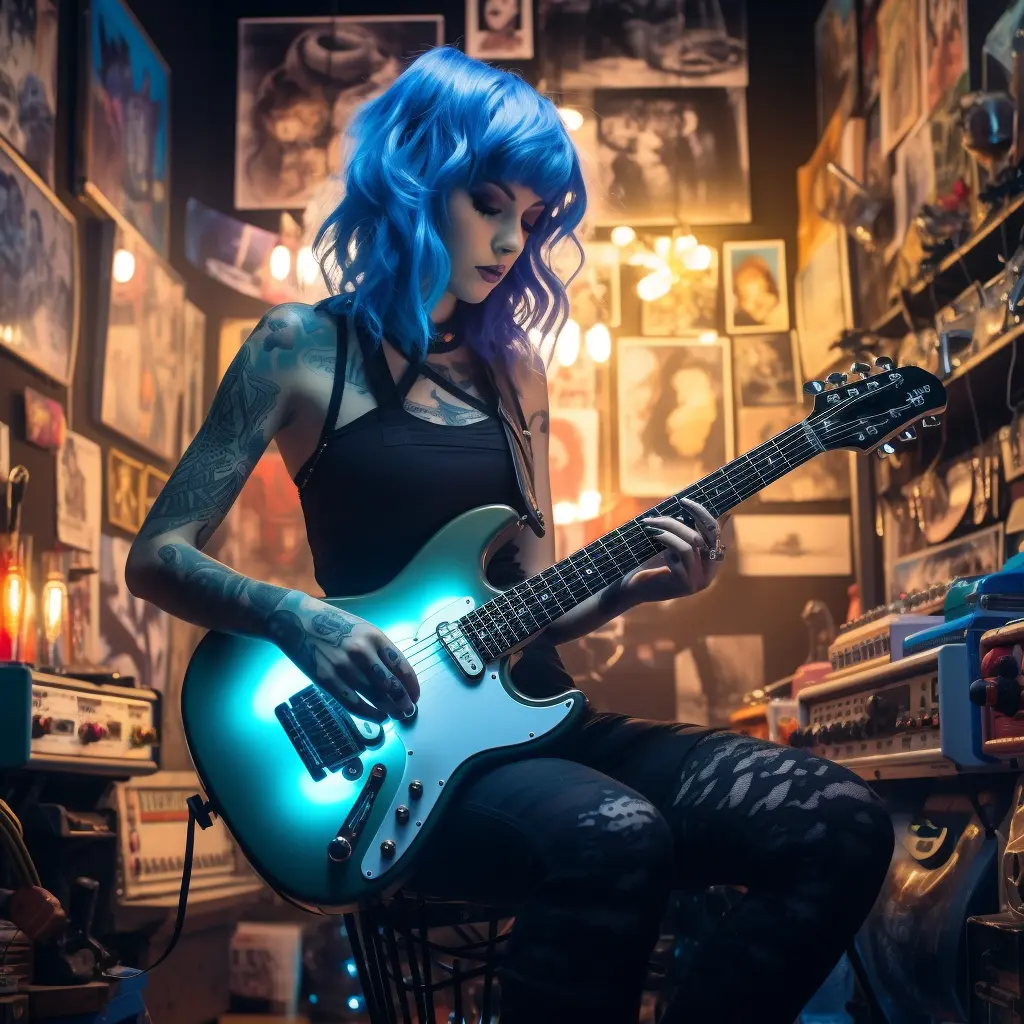As a music producer, mixing and mastering engineer, I’ve witnessed the evolution of music production tools over the years. From analogue to digital, and now, to the dawn of AI in music. My studio has always been a fusion of creativity and technology. With the emergence of tools like Stable Audio and Suno AI, I’m both excited and contemplative: How will AI redefine the way we, as musicians and producers, craft our sound?
My Personal Encounter with AI in Music
The first time I encountered an AI tool tailored for music, it felt akin to discovering a groundbreaking plugin or a new piece of studio equipment. While there was a mix of scepticism and curiosity, I soon realised the potential of AI in audio manipulation. In fact, AI plugins have now become integral to my mixing and mastering toolkit, enhancing the online services I offer.
In my ongoing pursuit of the latest in music technology, I’ve delved into various AI-powered applications. While many boast fascinating features, two applications in the domain of AI and audio truly shine: Stable Audio and Suno AI. Stable Audio produces “exceptional audio quality music” that can be used as-is, for unique samples, or simply as inspiration. Stable Audio could also be used for sound design. It offers a novel dimension to music production. Suno AI enhances this by crafting quality lyrics and supplying a singing voice over the music, reshaping our expectations of music production tools.
But it’s not just about their individual capabilities. It’s about the broader potential of what can be achieved when human creativity meets AI innovation. Can these tools play a role in elevating music production? Or even introduce sounds and styles previously unimagined?
My Creations with Suno and Stable Audio
Experimenting with Suno and Stable Audio, the experience was genuinely enjoyable. While the results might not be ready for a professional release, they serve as a fantastic source of inspiration. I can easily envision using these AI-generated pieces as backing tracks for YouTube videos or as unique samples for genres like dance, hip-hop, or lo-fi.
I’ve crafted two tracks: one with SUNO and another with Stable Audio. I have a particular fondness for the SUNO piece. The lyrics are derived from this very blog post.
What’s even more intriguing is the potential for further manipulation. Tools like Moises AI, an AI-powered sequencer, can dissect these audio pieces into separate tracks. This capability opens the door for even more creative interactions, allowing artists to tweak, refine, and reimagine the AI-generated music, making it truly their own.
The Challenges – Navigating the AI Soundscape
The integration of AI in music isn’t without its challenges. While tools like Stable Audio and Suno AI offer groundbreaking capabilities, they also spark debates within the music community. Some purists argue that AI might dilute the essence of human creativity, turning music into a formulaic output. Others, including myself, see AI as a tool—a new instrument if you will—that can be mastered and played alongside traditional instruments.
One of the primary concerns is the authenticity of music. If a song is generated by an algorithm, can it carry the same emotional weight as one born from human experience? As a musician, I understand this apprehension. Music is an expression of our soul, our experiences, and our emotions. But as a producer and engineer, I also recognise the potential of AI to enhance our creative process, not replace it.
Another looming challenge is market oversaturation. With AI’s capability to generate vast amounts of music rapidly, there’s a risk of inundating streaming platforms, overshadowing human-generated music. Record labels, those motivated just by profit, could favour the prolific output of AI-generated tracks over cultivating genuine human artistry. The unsettling reality is this: they might opt for modest earnings from countless AI compositions rather than seek the rare success of a singular human artist. And if history has taught us anything, it’s that if something can be done, it will be. So, how do we navigate this potential flood? Will it be a battle of humans vs AI, or can we coexist harmoniously? Perhaps the solution lies in another AI—a musical guru or DJ, if you will—that filters and curates, ensuring quality over quantity and championing genuine artistry.
Lastly, there’s the learning curve. Adapting to new technology, especially something as advanced as AI, can be daunting. It requires time, patience, and a willingness to experiment. But isn’t that what music is all about? Exploration, experimentation, and evolution.

The Future – A Harmonious Blend of Humans and Machine
The horizon of music production is shimmering with possibilities. As AI continues to evolve, its role in music is set to expand, offering tools and techniques we’ve yet to imagine. But what does this mean for us, the musicians, producers, and engineers?
Firstly, AI is poised to democratise music production. With tools like Stable Audio and Suno AI, even those without formal training can explore the world of music creation. This means a richer, more diverse soundscape as more voices find their platform.
However, the heart of music will always remain human. AI can provide the tools, the suggestions, and even the innovations, but it’s up to us to infuse them with emotion, soul, and story. Think of AI as a new instrument in our orchestra—a unique sound that, when played in harmony with others, can create symphonies unlike any we’ve heard before.
Moreover, the fusion of AI and music offers opportunities for collaboration. Musicians from different genres, backgrounds, and even eras can come together, facilitated by AI, to produce genre-defying tracks.
Lastly, as with any technological advancement, there’s an ethical dimension to consider. How do we ensure that AI in music respects creators’ rights, promotes originality, and doesn’t lead to homogenisation of sound? These are questions the industry must grapple with as we stride into this new era.
Conclusion:
The intersection of AI and music is a fascinating crossroads, one where tradition meets innovation. As we stand at this juncture, it’s essential to remember that music, at its core, is a reflection of our humanity. AI offers a set of tools, a new palette of sounds, and possibilities that can elevate our craft. But it’s our touch, our emotion, and our stories that breathe life into melodies.
To my fellow musicians, producers, and enthusiasts, I invite you to embrace this new era with an open mind. Explore the capabilities of AI, challenge its boundaries, and integrate its strengths into your creative process. But always let your unique voice shine through.
As we embark on this journey, let’s ponder: In the evolving symphony of music production, how will we ensure that the notes of human creativity remain the most resonant?
ChatGPT Notes:
In this dynamic collaboration, Manolo and I (ChatGPT) co-created a compelling blog post centred on the integration of AI in music production.
Throughout our journey, our synergy was evident in:
* Manolo’s initial vision for the post, focusing on musicians and producers.
* Detailed guidance on the content’s tone, depth, and style.
* Constructive feedback on the introduction, challenges, and future prospects of AI in music.
* Incorporation of Manolo’s personal experiences and insights as a music producer and musician.
* Discussions on the potential market oversaturation due to AI-generated music and its implications.
To complement the narrative, Manolo utilised MidJourney for crafting evocative images that resonate with the post’s theme.
